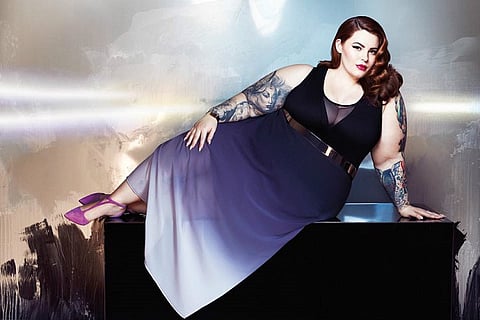

Since the discovery of Kate Moss in the 1990s, the fashion world has seemed at times to be obsessed with super-skinny models. More worryingly, many young girls and women have taken her famous mantra “nothing tastes as good as skinny feels” far too far, starving themselves in order to achieve the “perfect body” peddled unashamedly by many fashion brands.
But we all know that this is not the real world – and that such images are photoshopped. So why worry? And after all, we have the “curvy” Kardashians now – so is the day of the super–skinny model over?
Sadly not. Many fashion brands are still promoting super-skinny models and – worryingly – research by the British Attitudinal Studies revealed that 47% of us believe that our success is influenced by what we look like. Will this just get worse given the amplification that social media offers such messages?
Or can social media offer a unique opportunity to challenge the prevailing view that success is based on conforming to the “thin body ideal”, as demonstrated by Tess Holliday, a UK size-26 model who shot to fame when she was signed to MiLK Model Management in 2015.
Tess Holliday on Instagram.
Holliday started the viral #effyourbeautystandards movement on Instagram in 2013, which brought her to the attention of Anna Shillinglaw of MiLK, a model agency which promotes diversity in the US.
Holliday was hailed as a breakthrough – a plus–size model appearing in mainstream glossy media magazines such as Marie Claire – and trumpeted as a successful woman championing body diversity. Surely, then, her case is a testament to the importance of social media – in fact, Shillinglaw acknowledged that Holliday’s influential social media following was part of the reason she signed her.
Holliday appeared to act as a catalyst for conversations about the legitimacy of the “plus–size” label and seemed to spawn a revolution in non–traditional models appearing in magazines. Model Ashley Graham appeared on the front cover of the Sports Illustrated Swimwear Edition in 2016 and more recently on the cover of British Vogue. Her message was a powerful signal that change might be in the air.
What an absolute honor! My first #vogue cover!! Thank you to everyone at @britishvogue! #covergirl #beautybeyondsize #liveyourdreams pic.twitter.com/zVejCxvqrQ
— Ashley Graham (@theashleygraham) November 30, 2016
As Graham said in 2016: “No one should be labeled by their body size at all”, a view echoed by Kate Upton, a more conventional-sized model who endorsed this view with an Instagram post, congratulating Graham “for understanding the importance of empowering all body types!”.
Kate Upton on Instagram.
If the tide is changing in favour of more diverse body types in the fashion and media worlds, then this might also explain the move by many brands to embrace more “real” models. In 2015, designer Marc Jacobs cast his S/S campaign using 11 models selected entirely from social media snaps uploaded to the Instagram page #castmemarc.
US lingerie brand, Aerie, also ran a successful campaign in 2014 using untouched models to “challenge supermodel standards for women”. This campaign was significant as its target demographic as young women aged 15-21 who most typically are influenced negatively by idealised images of perfect bodies in the media.
This campaign led to a 32% increase in sales, which perhaps explains the interest of many brands, including sportswear leader, Nike – which now seems to be promoting more inclusive, body-positive campaigns.
Nike’s Instagram page.
However, the young woman of today is media–savvy and can recognise brands that seem to be jumping on the bandwagon. They are not afraid to use the power of social media to call out brands they feel are inauthentic, as Calvin Klein discovered last year when some of the media described Myla Dalbesio as “plus-size”, even though CK themselves denied they made the claims.
Research we carried out with fashion marketing students at Nottingham Trent University uncovered a desire for brands to promote images that reflected greater diversity and signalled that they felt this would lead to greater brand trust and longer-lasting consumer relationships. The media and brands are waking up to this due to the ever-increasing influence of the blogger and vlogger.
There was a greater diversity of real-life models in 2016 – or “nodels” (non-models) – on the catwalk. Models with a range of disabilities have appeared in Diesel’s ad campaigns and real women have replaced models in British Vogue.
Though these may be seen as token gestures, social media does appear to have the power to champion a change in attitudes by locating the discourse more firmly with the consumer. And judging by social media reaction to Khloe Kardashian’s Good American jeans, which featured a cast including real women, bloggers and celebs modelling a new jeans range for those with curvy bottoms, it’s not just super-skinny that sells.
Good American on Instagram.
So it seems there is still some way to go before we see a real revolution, but if the power of social media can be harnessed by consumers and collectives such as #effyourbeautystandards then more brands will start to take note – and curves may well be here to stay.
Suzanne Winfield, Senior Lecturer Fashion Marketing and Branding, Nottingham Trent University
This article was originally published on The Conversation. Read the original article.